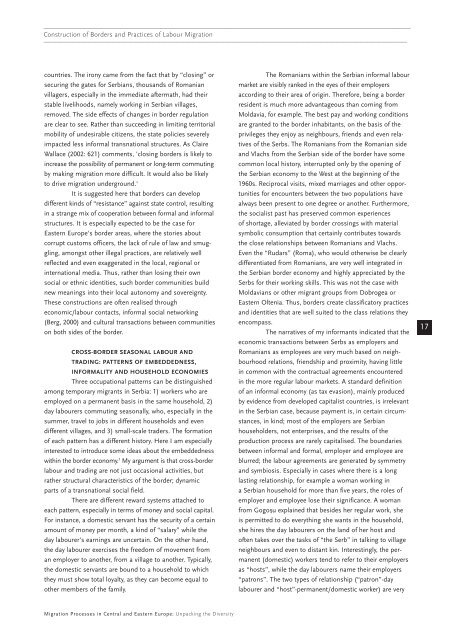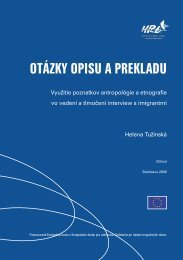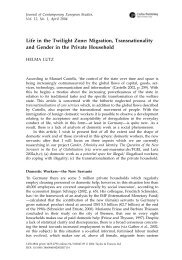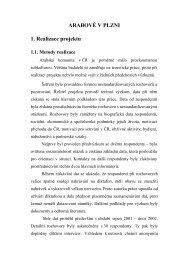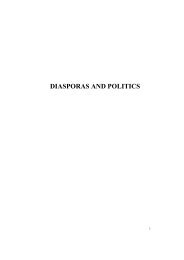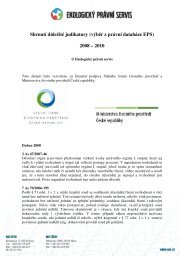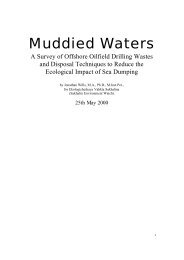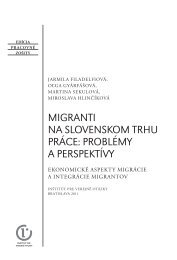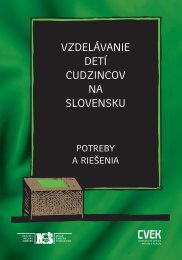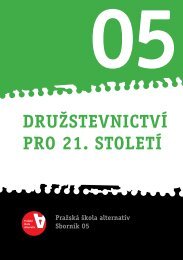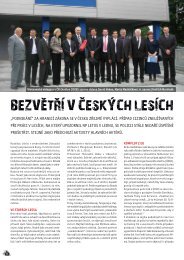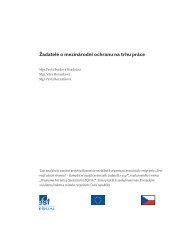Migration Processes in Central and Eastern Europe - Multiple Choices
Migration Processes in Central and Eastern Europe - Multiple Choices
Migration Processes in Central and Eastern Europe - Multiple Choices
You also want an ePaper? Increase the reach of your titles
YUMPU automatically turns print PDFs into web optimized ePapers that Google loves.
———————————————————————————————————————————————————————————————<br />
Construction of Borders <strong>and</strong> Practices of Labour <strong>Migration</strong><br />
———————————————————————————————————————————————————————————————<br />
countries. The irony came from the fact that by “clos<strong>in</strong>g” or<br />
secur<strong>in</strong>g the gates for Serbians, thous<strong>and</strong>s of Romanian<br />
villagers, especially <strong>in</strong> the immediate aftermath, had their<br />
stable livelihoods, namely work<strong>in</strong>g <strong>in</strong> Serbian villages,<br />
removed. The side effects of changes <strong>in</strong> border regulation<br />
are clear to see. Rather than succeed<strong>in</strong>g <strong>in</strong> limit<strong>in</strong>g territorial<br />
mobility of undesirable citizens, the state policies severely<br />
impacted less <strong>in</strong>formal transnational structures. As Claire<br />
Wallace (2002: 621) comments, 'clos<strong>in</strong>g borders is likely to<br />
<strong>in</strong>crease the possibility of permanent or long-term commut<strong>in</strong>g<br />
by mak<strong>in</strong>g migration more difficult. It would also be likely<br />
to drive migration underground.'<br />
It is suggested here that borders can develop<br />
different k<strong>in</strong>ds of “resistance” aga<strong>in</strong>st state control, result<strong>in</strong>g<br />
<strong>in</strong> a strange mix of cooperation between formal <strong>and</strong> <strong>in</strong>formal<br />
structures. It is especially expected to be the case for<br />
<strong>Eastern</strong> <strong>Europe</strong>'s border areas, where the stories about<br />
corrupt customs officers, the lack of rule of law <strong>and</strong> smuggl<strong>in</strong>g,<br />
amongst other illegal practices, are relatively well<br />
reflected <strong>and</strong> even exaggerated <strong>in</strong> the local, regional or<br />
<strong>in</strong>ternational media. Thus, rather than los<strong>in</strong>g their own<br />
social or ethnic identities, such border communities build<br />
new mean<strong>in</strong>gs <strong>in</strong>to their local autonomy <strong>and</strong> sovereignty.<br />
These constructions are often realised through<br />
economic/labour contacts, <strong>in</strong>formal social network<strong>in</strong>g<br />
(Berg, 2000) <strong>and</strong> cultural transactions between communities<br />
on both sides of the border.<br />
CROSS-BORDER SEASONAL LABOUR AND<br />
TRADING: PATTERNS OF EMBEDDEDNESS,<br />
INFORMALITY AND HOUSEHOLD ECONOMIES<br />
Three occupational patterns can be dist<strong>in</strong>guished<br />
among temporary migrants <strong>in</strong> Serbia: 1) workers who are<br />
employed on a permanent basis <strong>in</strong> the same household, 2)<br />
day labourers commut<strong>in</strong>g seasonally, who, especially <strong>in</strong> the<br />
summer, travel to jobs <strong>in</strong> different households <strong>and</strong> even<br />
different villages, <strong>and</strong> 3) small-scale traders. The formation<br />
of each pattern has a different history. Here I am especially<br />
<strong>in</strong>terested to <strong>in</strong>troduce some ideas about the embeddedness<br />
with<strong>in</strong> the border economy. 3 My argument is that cross-border<br />
labour <strong>and</strong> trad<strong>in</strong>g are not just occasional activities, but<br />
rather structural characteristics of the border; dynamic<br />
parts of a transnational social field.<br />
There are different reward systems attached to<br />
each pattern, especially <strong>in</strong> terms of money <strong>and</strong> social capital.<br />
For <strong>in</strong>stance, a domestic servant has the security of a certa<strong>in</strong><br />
amount of money per month, a k<strong>in</strong>d of “salary” while the<br />
day labourer's earn<strong>in</strong>gs are uncerta<strong>in</strong>. On the other h<strong>and</strong>,<br />
the day labourer exercises the freedom of movement from<br />
an employer to another, from a village to another. Typically,<br />
the domestic servants are bound to a household to which<br />
they must show total loyalty, as they can become equal to<br />
other members of the family.<br />
The Romanians with<strong>in</strong> the Serbian <strong>in</strong>formal labour<br />
market are visibly ranked <strong>in</strong> the eyes of their employers<br />
accord<strong>in</strong>g to their area of orig<strong>in</strong>. Therefore, be<strong>in</strong>g a border<br />
resident is much more advantageous than com<strong>in</strong>g from<br />
Moldavia, for example. The best pay <strong>and</strong> work<strong>in</strong>g conditions<br />
are granted to the border <strong>in</strong>habitants, on the basis of the<br />
privileges they enjoy as neighbours, friends <strong>and</strong> even relatives<br />
of the Serbs. The Romanians from the Romanian side<br />
<strong>and</strong> Vlachs from the Serbian side of the border have some<br />
common local history, <strong>in</strong>terrupted only by the open<strong>in</strong>g of<br />
the Serbian economy to the West at the beg<strong>in</strong>n<strong>in</strong>g of the<br />
1960s. Reciprocal visits, mixed marriages <strong>and</strong> other opportunities<br />
for encounters between the two populations have<br />
always been present to one degree or another. Furthermore,<br />
the socialist past has preserved common experiences<br />
of shortage, alleviated by border cross<strong>in</strong>gs with material<br />
symbolic consumption that certa<strong>in</strong>ly contributes towards<br />
the close relationships between Romanians <strong>and</strong> Vlachs.<br />
Even the “Rudars” (Roma), who would otherwise be clearly<br />
differentiated from Romanians, are very well <strong>in</strong>tegrated <strong>in</strong><br />
the Serbian border economy <strong>and</strong> highly appreciated by the<br />
Serbs for their work<strong>in</strong>g skills. This was not the case with<br />
Moldavians or other migrant groups from Dobrogea or<br />
<strong>Eastern</strong> Oltenia. Thus, borders create classificatory practices<br />
<strong>and</strong> identities that are well suited to the class relations they<br />
encompass.<br />
The narratives of my <strong>in</strong>formants <strong>in</strong>dicated that the<br />
economic transactions between Serbs as employers <strong>and</strong><br />
Romanians as employees are very much based on neighbourhood<br />
relations, friendship <strong>and</strong> proximity, hav<strong>in</strong>g little<br />
<strong>in</strong> common with the contractual agreements encountered<br />
<strong>in</strong> the more regular labour markets. A st<strong>and</strong>ard def<strong>in</strong>ition<br />
of an <strong>in</strong>formal economy (as tax evasion), ma<strong>in</strong>ly produced<br />
by evidence from developed capitalist countries, is irrelevant<br />
<strong>in</strong> the Serbian case, because payment is, <strong>in</strong> certa<strong>in</strong> circumstances,<br />
<strong>in</strong> k<strong>in</strong>d; most of the employers are Serbian<br />
householders, not enterprises, <strong>and</strong> the results of the<br />
production process are rarely capitalised. The boundaries<br />
between <strong>in</strong>formal <strong>and</strong> formal, employer <strong>and</strong> employee are<br />
blurred; the labour agreements are generated by symmetry<br />
<strong>and</strong> symbiosis. Especially <strong>in</strong> cases where there is a long<br />
last<strong>in</strong>g relationship, for example a woman work<strong>in</strong>g <strong>in</strong><br />
a Serbian household for more than five years, the roles of<br />
employer <strong>and</strong> employee lose their significance. A woman<br />
from Gogos‚u expla<strong>in</strong>ed that besides her regular work, she<br />
is permitted to do everyth<strong>in</strong>g she wants <strong>in</strong> the household,<br />
she hires the day labourers on the l<strong>and</strong> of her host <strong>and</strong><br />
often takes over the tasks of “the Serb” <strong>in</strong> talk<strong>in</strong>g to village<br />
neighbours <strong>and</strong> even to distant k<strong>in</strong>. Interest<strong>in</strong>gly, the permanent<br />
(domestic) workers tend to refer to their employers<br />
as “hosts”, while the day labourers name their employers<br />
“patrons”. The two types of relationship (“patron”-day<br />
labourer <strong>and</strong> “host”-permanent/domestic worker) are very<br />
17<br />
<strong>Migration</strong> <strong>Processes</strong> <strong>in</strong> <strong>Central</strong> <strong>and</strong> <strong>Eastern</strong> <strong>Europe</strong>: Unpack<strong>in</strong>g the Diversity


